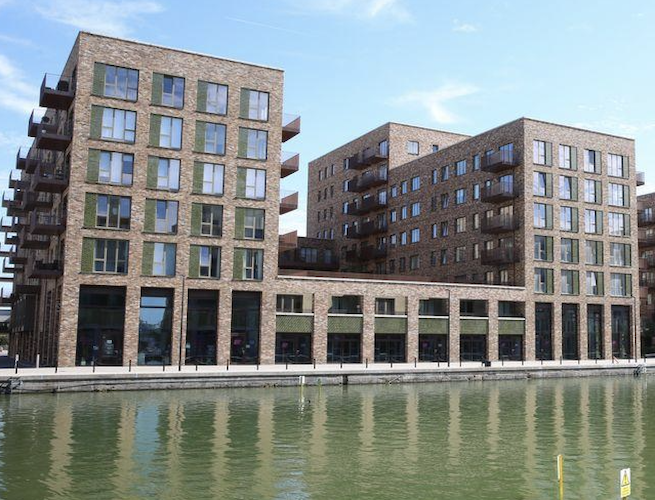Earlier this year Sadiq Khan trumpeted his “record-breaking” performance on delivering new affordable housing in the capital, with 18,722 new homes getting underway in 2021/22, more than in any year since 2003.
But he will need to break his own record again by March next year to hit his overall target of starting 116,000 new homes between 2016 and 2023, according to the London Assembly’s annual affordable housing monitor report, published today.
The report looks in detail at City Hall’s progress with spending almost £9 billion allocated by the national government for new homes since 2016 – £4.82 billion for 116,000 homes to be started by March next year, and a further £4 billion to start 35,000 homes between 2021 and 2026, with the cash going to housing associations and, increasingly, London’s local councils.
To date, the monitoring report says, 91,000 affordable homes with City Hall funding have been got underway towards the 2016 to 2023 target, leaving a record 25,000 starts required this year. And while £3.4 billion of the 2021 to 2026 allocation had been earmarked for a further 29, 456 homes, none have so far been started.
Quizzed about the figures by the Assembly’s housing committee today, Mayor Khan’s deputy for housing, Tom Copley, struck a warning note, saying the now former Chancellor Kwasi Kwarteng’s mini-budget or “fiscal event” has had “a direct impact on our ability to deliver affordable homes for Londoners”.
Copley said, “Every time the government makes a statement” the result is that “the path to hitting the target narrows”. He added: “It is even more difficult now for our delivery partners to borrow. The mood has never been so bleak. The big challenge is the appetite of our partners to take on risk. It’s very difficult to make predictions with so much volatility out there.”
The Assembly’s analysis shows just over half of the 18,722 homes started in 2021/22 with mayoral funding were for social rent or London Affordable Rent with levels set at roughly 50 per cent of market rents, reflecting a continuing shift towards funding cheaper tenures.
Across the whole programme to 2021/22, the proportion of shared ownership or London Living Rent homes for middle earners reduced by 14%, the data shows, while half of the 35,000 homes in the 2021 to 2026 programme will be for social rent, including a new target for 20,000 council homes by 2024. Copley said this was the right decision because “that is the type of housing that is most needed in London” even though it means there will be fewer affordable homes of all types built altogether.
As the report points out, with social housing requiring more public funding per unit, “overall there will be 70% fewer houses built…during 2021-26 compared to the previous programme,” with rising costs and workforce shortages also adding to the pressure on numbers.
The report also shows 10,252 new affordable homes completed in 2021/22, again a record number since Khan took office, with 3,291 at social or London Affordable Rent and some 45,000 completed over the programme as a whole, amounting to 35% of the target.
Challenged over speed at which housing projects are actually completed, Copley told the committee that “Many of the developments funded by City Hall are large, complex schemes”. And asked why a larger number of family-sized homes aren’t being funded, he said more should be coming under the 2021 to 2026 programme, “but larger homes cost more money – to deliver big numbers of family homes we are going to need more money”.
Southwark saw the most affordable homes started, with 2,090 underway, followed by Newham with 1,854, Ealing with 1,658, Barnet with 1,207 and Barking & Dagenham with 941.
At the other end of the league were Richmond, where just 48 were started, Sutton, with 65, Bromley with 136, Islington with 141 and Kingston with 157. Newham, with 1,156, saw the most homes completed, followed by Croydon with 814, Ealing with 743, Brent with 569 and Wandsworth with 528.
The need for family housing is also highlighted, a regular concern for the committee, with “many Londoners faced with living in homes too small for their needs,” according to the report. Housing providers are not required to report bedroom numbers, but estimates in the report show three or more bed homes making up 15% of affordable homes started in 2021/22.
The report also sets Khan’s record figures in the wider context of continuing shortfalls in housebuilding in the capital, alongside rising private rents and sale prices.
The Mayor’s London Plan, the blueprint for development in the city, set a target of 52,000 new homes a year, itself reduced at public inquiry from City Hall’s estimates of housing need, some 66,000 new homes annually, including 31,000 at social rents. But 2021/22, according to government figures, saw just 37, 183 new homes of all tenures underway overall.
On London strives to provide more of the kind of journalism the capital city needs. Become a supporter for just £5 a month. You will even get things for your money. Details here.

